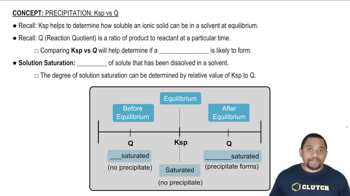Here are the essential concepts you must grasp in order to answer the question correctly.
Solubility and Polarity
Solubility depends on the polarity of molecules; polar molecules dissolve well in water (a polar solvent), while nonpolar molecules dissolve better in fats or oils (nonpolar solvents). Understanding the presence of polar groups like hydroxyl or amine groups helps predict solubility.
Recommended video:
Structure and Functional Groups of Vitamins
The chemical structure and functional groups of vitamins determine their polarity. Vitamin B6 contains polar groups such as hydroxyl and amine groups, making it more water soluble, whereas vitamin E has a long nonpolar hydrocarbon chain, increasing its fat solubility.
Recommended video:
Functional Groups Example
Hydrophobic vs. Hydrophilic Interactions
Hydrophobic molecules repel water and tend to dissolve in lipids, while hydrophilic molecules attract water and dissolve in aqueous environments. Recognizing these interactions helps explain why some vitamins are fat soluble (like vitamin E) and others are water soluble (like vitamin B6).
Recommended video:
Ksp vs Q in Precipitation
 Verified step by step guidance
Verified step by step guidance


